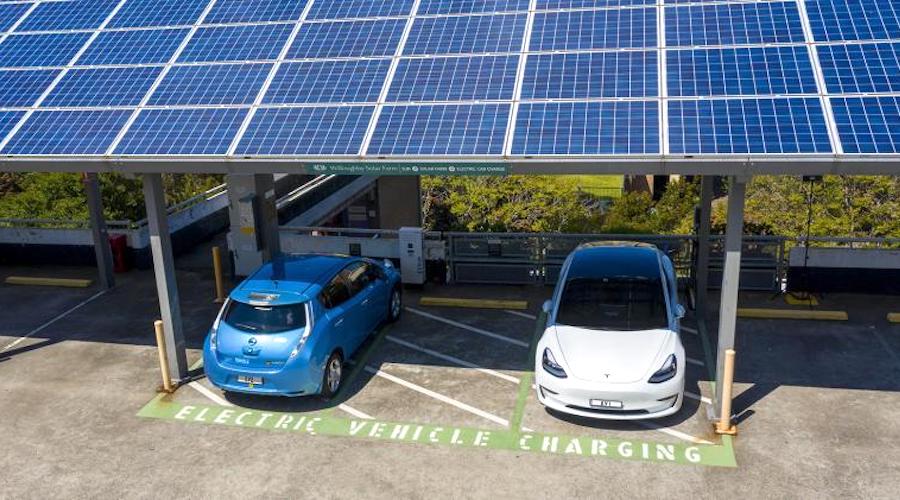The charging infrastructure needed to boost EV adoption – report

In a new insight published by McKinsey & Company’s Frank Mühlon, president of the e-mobility division of ABB, and Giovanni Palazzo, president and CEO of Electrify America, said that the current number-one concern when it comes to the adoption of electric vehicles is whether adequate charging infrastructure is in place.
In their view, this means that to keep pace with the rapidly growing interest in EVs, vast networks of publicly accessible chargers will need to be built and put into operation in short order and that a failure to do so could stymie EV growth and slow progress on decarbonizing road transport.
Citing data from BloombergNEF, the experts pointed out that it is estimated that the world will need around 290 million charging points by 2040, including 12 million in public places. This, in turn, will require $500 billion in public-private investment which, they believe, will likely be focused on high-impact segments such as commercial vehicles and public transport, as well as those that operate in highly dense environments.
“Overcoming obstacles to expanding EV infrastructure will involve offering financial incentives and regulatory support to drive the transition from internal combustion engine (ICE) vehicles to EVs, including by favoring efficiencies through shared and autonomous EV rides,” Mühlon said.
For Palazzo, policy support at the local and utility levels is also key.
As an example, he mentioned that the state of California—the largest electric-vehicle market in the United States—has already suggested best practices to expedite permits for the installation of EV charging stations, potentially accelerating EV growth.
“Continued updates to local permitting, as well as reassessments of utility demand, will be important in paving the way for EV infrastructure,” the executive said.
The CEO of Electrify America also highlighted the fact that public charging has a significant real-estate component, as it should be conveniently located both on major interstates and in dense urban areas.
“Real estate also relates to power availability, especially for fast charging,” Palazzo said. “A location could be great from a utilization perspective, but if there is no electrical-grid capacity, installation could be challenging regardless of the solutions and technology leveraged.”
Tech developments + collaboration
Collaborations between charging-technology providers, OEMs, operators, utilities, and players in renewable energy will also be pivotal in the view of the experts consulted by McKinsey.
Mühlon pointed out that some companies are already making bold moves, diversifying their portfolios to participate in the operation of charging stations. He spoke of the case of IONITY—a joint venture of BMW Group, Daimler AG, Ford Motor Company, Hyundai, and the Volkswagen Group with Audi and Porsche— that operates a network of approximately 400 fast-charging stations across 24 European countries.
The ABB executive also mentioned that new software solutions are playing an important part in shaping the future of the sector.
“One cloud-based digital solution aims to optimize the real-time fleet management of EVs and to speed up the electrification of transport fleets by helping operators maintain 100% business continuity as they make the transition to being fully electric,” Mühlon said.
For Palazzo, the five-to-ten-minute charge is another development that will be game-changing. In his view, with 800-volt architectures becoming more common in EVs, five-minute charge-ups may be a reality soon.
“Charging will ideally become convenient, fast, and seamless. Of course, what might become routine to customers will require hard work from technology experts and a commitment to operational excellence,” Palazzo said. “When I say ‘convenient,’ it’s not just a matter of location; it also means being available and online, which will require predictive maintenance enabled by data science and real-time diagnostics.”
Mühlon also pointed out the importance of convenience when it comes to EV adoption. From his perspective, plug-and-charge solutions represent the next significant evolution in fueling vehicles.
He explained that plug-and-charge enables drivers to drive to the charger, plug in the connector, and start charging automatically, removing the need for credit cards or payments via a smartphone.
Another development that, according to Mühlon, may be a game-changer is the vehicle-to-grid technology with bidirectional charging. He said the chargers can smooth out each day’s uneven generation of renewable electricity, such as through solar and wind, and enable EV drivers to transfer surplus power back to the grid—with the potential to earn money back.
{{ commodity.name }}
{{ post.title }}
{{ post.date }}


Comments